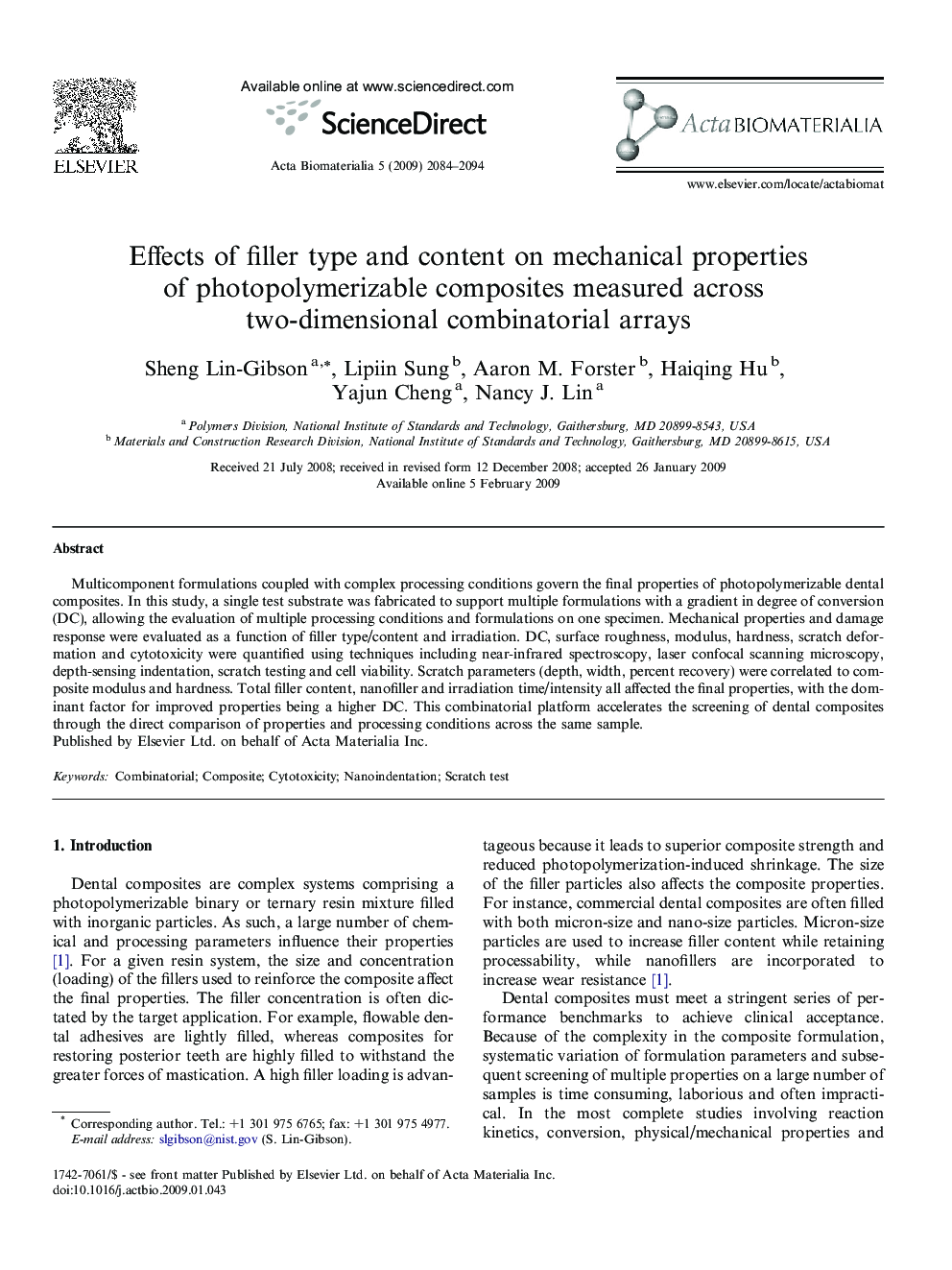| Article ID | Journal | Published Year | Pages | File Type |
|---|---|---|---|---|
| 1265 | Acta Biomaterialia | 2009 | 11 Pages |
Multicomponent formulations coupled with complex processing conditions govern the final properties of photopolymerizable dental composites. In this study, a single test substrate was fabricated to support multiple formulations with a gradient in degree of conversion (DC), allowing the evaluation of multiple processing conditions and formulations on one specimen. Mechanical properties and damage response were evaluated as a function of filler type/content and irradiation. DC, surface roughness, modulus, hardness, scratch deformation and cytotoxicity were quantified using techniques including near-infrared spectroscopy, laser confocal scanning microscopy, depth-sensing indentation, scratch testing and cell viability. Scratch parameters (depth, width, percent recovery) were correlated to composite modulus and hardness. Total filler content, nanofiller and irradiation time/intensity all affected the final properties, with the dominant factor for improved properties being a higher DC. This combinatorial platform accelerates the screening of dental composites through the direct comparison of properties and processing conditions across the same sample.
